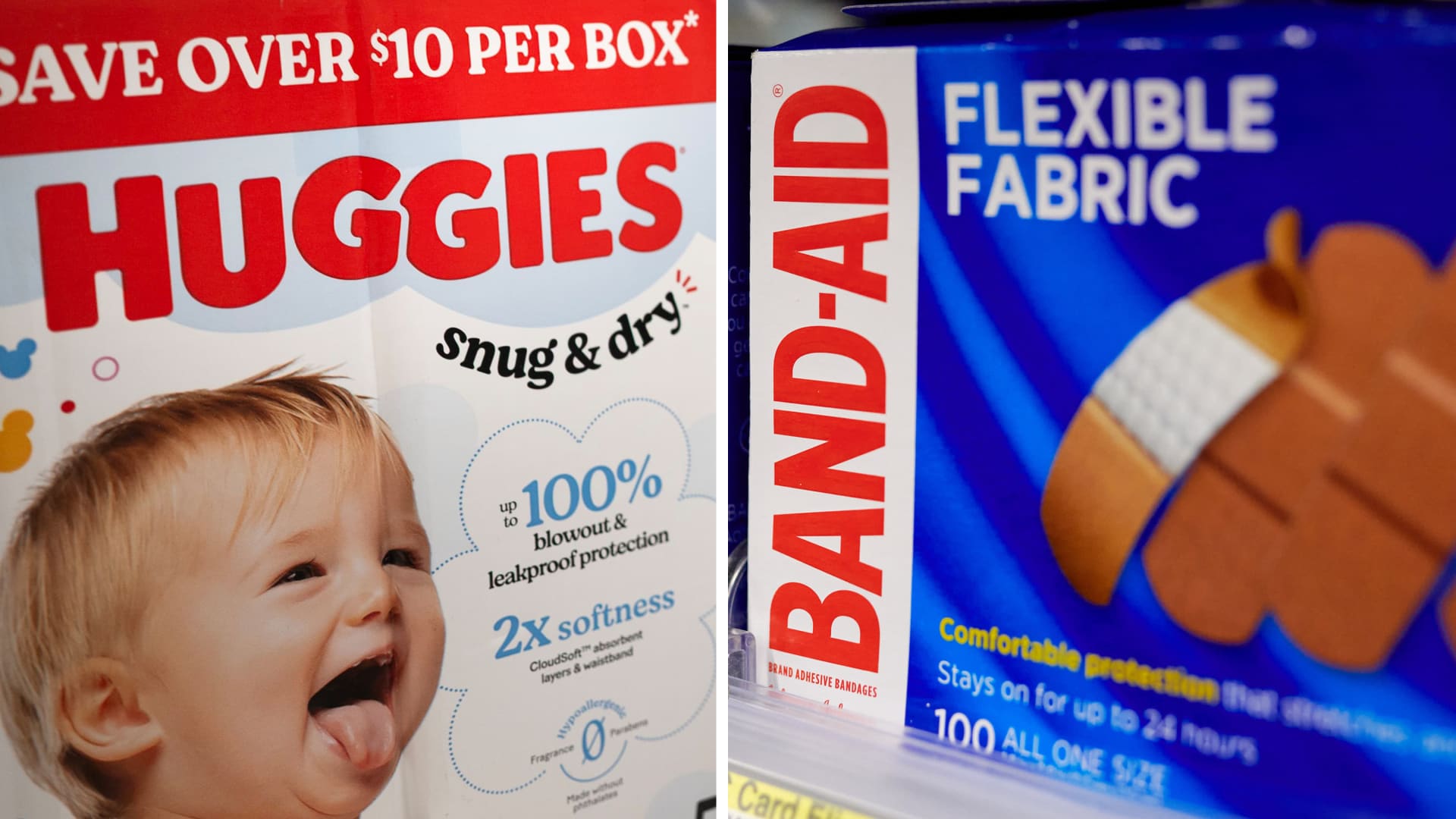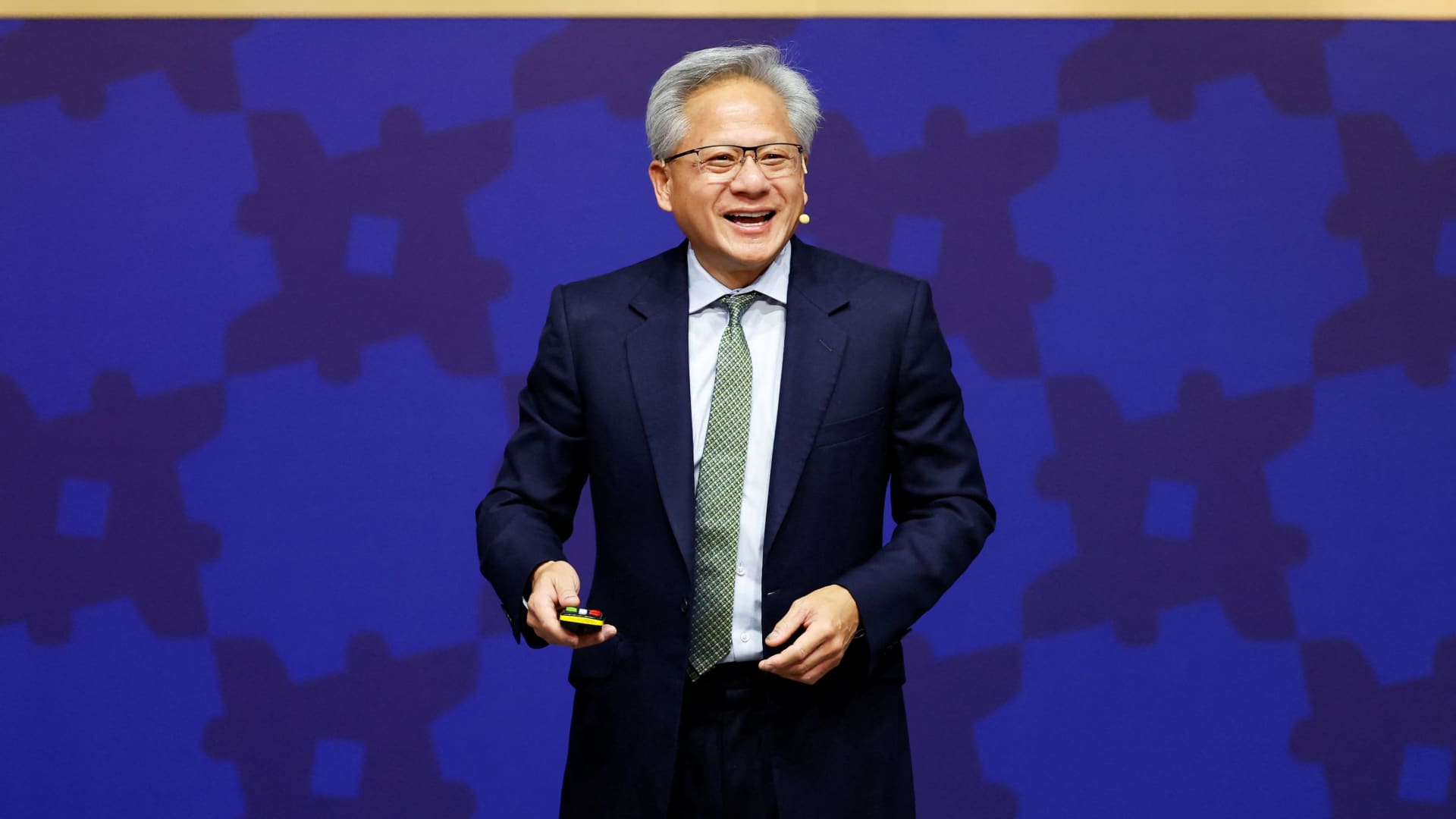Every weekday, the CNBC Investing Club with Jim Cramer releases the Homestretch — an actionable afternoon update, just in time for the last hour of trading on Wall Street. Market update: Stocks are trading lower Monday, extending the market’s recent struggle to find its footing. Concerns about stretched valuations, particularly in the technology sector, along with debt-driven spending on data centers and AI with uncertain returns, weighed on stocks. Amazon is seeking to raise $15 billion through a bond sale, its first in three years, Bloomberg reported Monday, which will help the cause. Deals like this also benefit the large banks that oversee them. Goldman Sachs, JPMorgan , and Morgan Stanley have all been tapped to manage the bond sale, per the report. Bullpen additions: As we continue to navigate the evolving market landscape and the possible end to the “Year of Magical Investing,” we’re adding a couple of new stocks to the Bullpen poised to benefit from a rotation out of tech and AI themes. One group we are closely monitoring is the consumer packaged goods sector. The consumer staples sector is the worst-performing sector year to date, but the market could return to the group amid concerns about tech valuations and a slowing economy. We’ve debated the household products group versus the food and beverage category. We’re leaning toward household products because the accelerating adoption of GLP-1s, driven by lower drug prices and Eli Lilly’s oral pill next year, could add uncertainty to the food and beverage space. That brings us to Kimberly-Clark , the paper products specialist and parent company of the Cottonelle, Huggies, and Kleenex brands. Two weeks ago, it announced it was buying Kenvue, valuing the consumer health company at an enterprise value of approximately $49 billion. The market hated the transaction when the news was announced. Shares of Kimberly-Clark fell 14% that day, from about $120 to $102, and traded as low as $100 later that week. For the year, Kimberly-Clark is down about 20%. There were two primary concerns investors had about the deal. Some questioned why Kimberly-Clark would pay this much for Kenvue, given the headline risk surrounding Tylenol, as well as talc-related lawsuits in the United Kingdom. Others debated the strategic fit of a toilet paper company getting into healthcare. CEO Mike Hsu addressed all of those questions head-on when he appeared on “Mad Money” to discuss the deal. The packaged goods group desperately needs M & A to reduce costs and spur growth, so we commend Hsu for taking on this challenge. There’s actually a lot to like about this deal after you get past the headline noise. The new company will own ten different $1 billion brands and become the second-largest consumer packaged goods company behind Procter & Gamble . The benefits of combining are solid, with a potential value of $2.4 billion, comprising $1.9 billion in cost savings and approximately $500 million in incremental profit from revenue synergies. The valuation appears attractive, with Kimberly-Clark trading at less than 14 times 2026 earnings-per-share estimates (a 5% discount to Procter & Gamble) and offering a 4.8% dividend yield. The second addition is Johnson & Johnson. Shares of this pharmaceutical name have had an excellent 2025 performance, gaining about 38%. The strength of its oncology portfolio has been a significant driver of this success, and management is extremely bullish about its future. Johnson & Johnson reported roughly $21 billion in oncology sales for 2024, but expects the business to grow to more than $50 billion by 2030. The company picked up another oncology asset on Monday with the announcement of its acquisition of Halda Therapeutics. Halda is a clinical-stage biotechnology firm with a proprietary platform that develops oral, targeted therapies for multiple types of solid tumors, including prostate cancer. J & J is also in the process of separating its orthopedics business. The unit generated about $9 billion in sales last year, but it doesn’t fit the profile of the rest of the high-growth, high-margin MedTech segment. By shedding this business, management can better focus its investment toward faster-growing parts of the company. And still, J & J trades for less than 20 times earnings Up next: There are no major earnings reports after the closing bell. Before the opening bell on Tuesday, Home Depot, Medtronic, Baidu , and PDD Holdings report results. Additionally, the NER Pulse weekly employment preliminary estimate will be released, serving as a substitute for government-collected data. (See here for a full list of the stocks in Jim Cramer’s Charitable Trust.) As a subscriber to the CNBC Investing Club with Jim Cramer, you will receive a trade alert before Jim makes a trade. Jim waits 45 minutes after sending a trade alert before buying or selling a stock in his charitable trust’s portfolio. If Jim has talked about a stock on CNBC TV, he waits 72 hours after issuing the trade alert before executing the trade. THE ABOVE INVESTING CLUB INFORMATION IS SUBJECT TO OUR TERMS AND CONDITIONS AND PRIVACY POLICY , TOGETHER WITH OUR DISCLAIMER . NO FIDUCIARY OBLIGATION OR DUTY EXISTS, OR IS CREATED, BY VIRTUE OF YOUR RECEIPT OF ANY INFORMATION PROVIDED IN CONNECTION WITH THE INVESTING CLUB. NO SPECIFIC OUTCOME OR PROFIT IS GUARANTEED.
We’re adding 2 stocks to the Bullpen to benefit from market rotation












